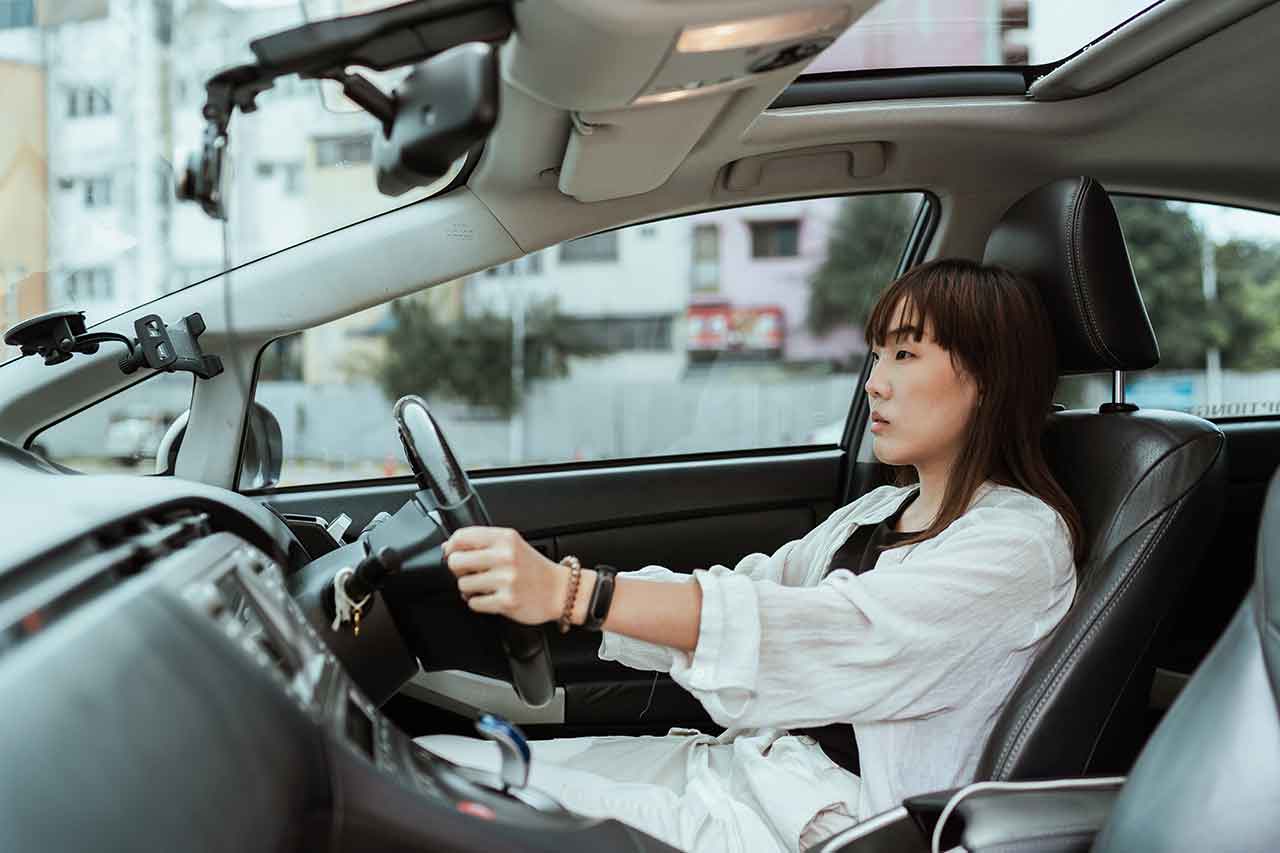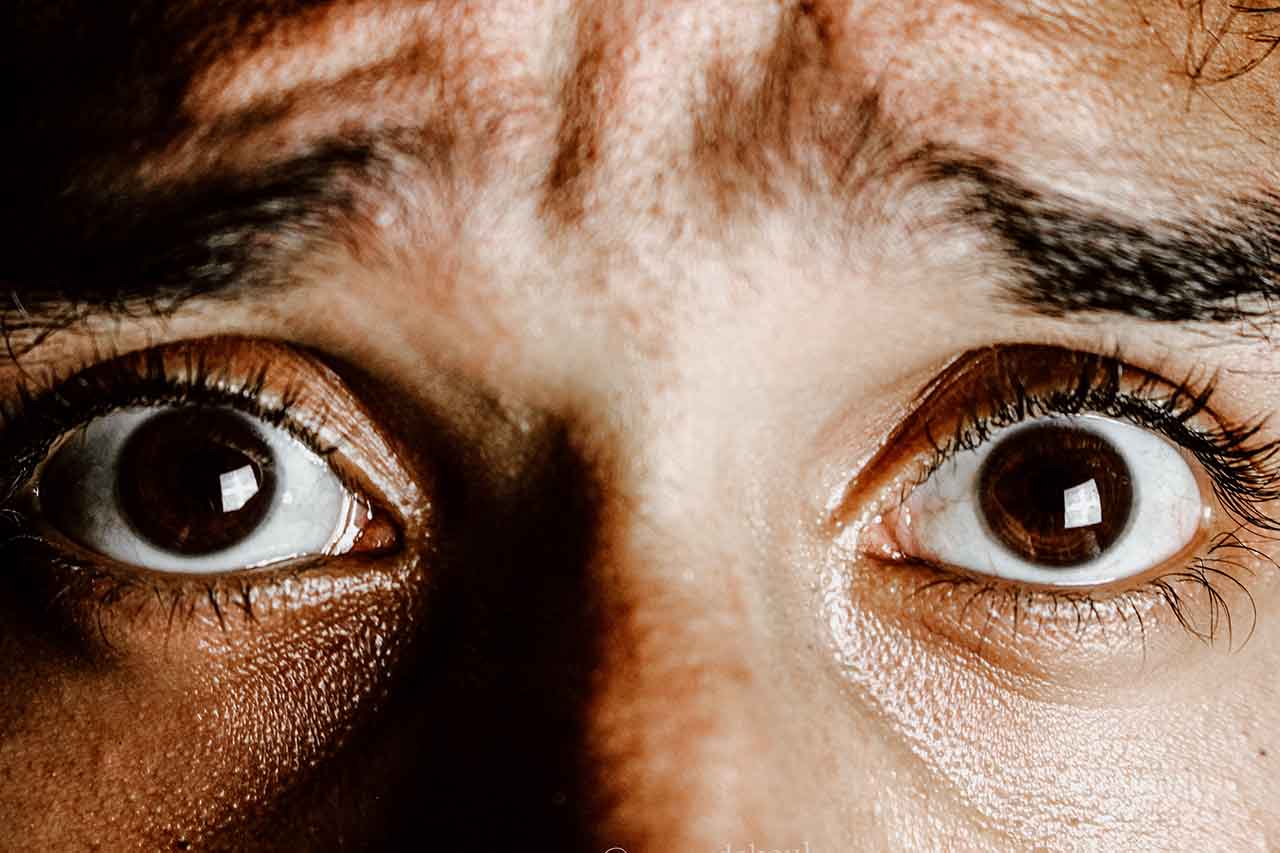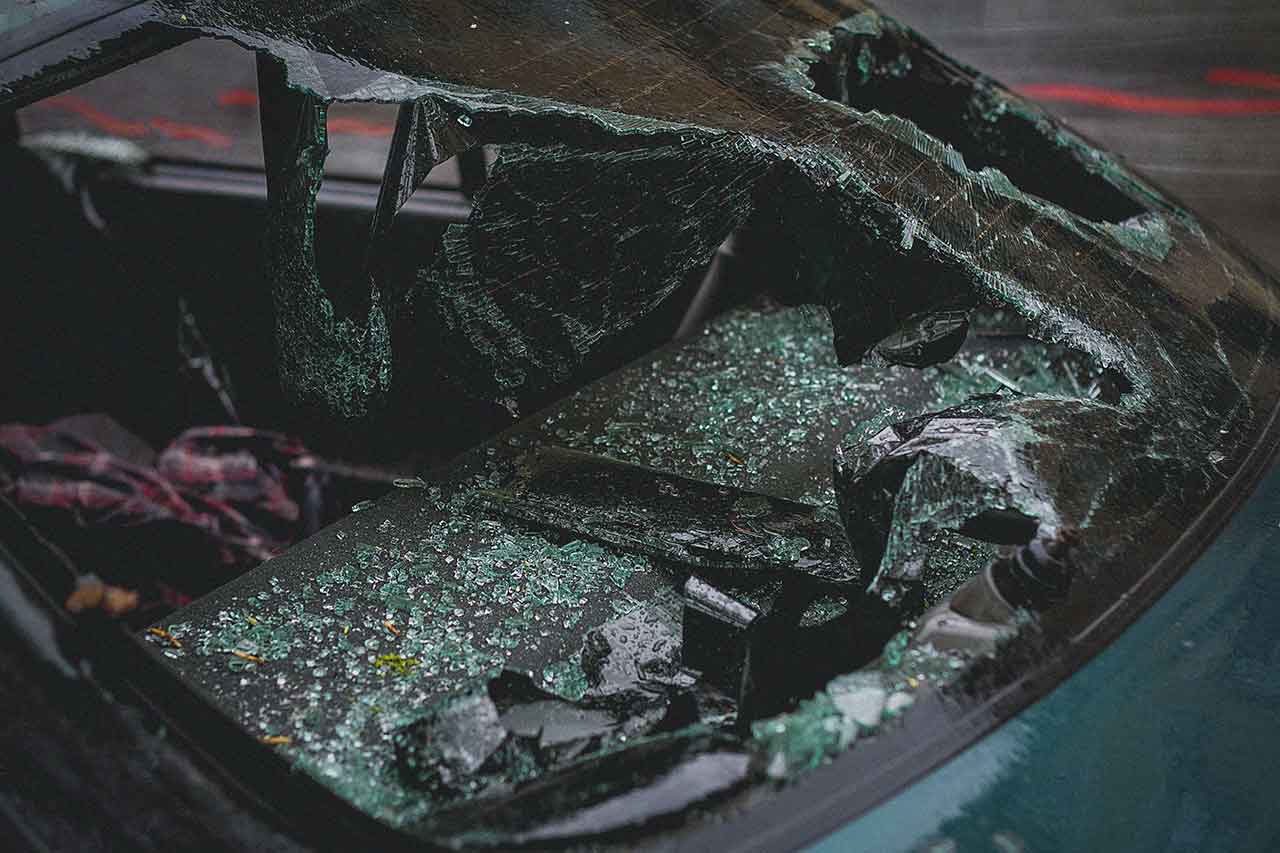Anxiety and fears are frequent and very prevalent in our lives. Situations that are difficult to get out of and uncontrollable provide ideal conditions for anxiety. Driving is, unsurprisingly, one of the most prevalent circumstances that cause anxiety. Motorways, in particular, may be difficult to navigate since they might trap you with no quick or safe way out.
Driving anxiety, like other fears, can hit inconvenient circumstances, such as in the middle of a long journey on a congested highway. The abrupt surge of panic can be unsettling or scary for many people.
Consequently, you may decide to drive less or skip automobile journeys altogether. You could even feel self-conscious about your fear.
Although it may appear rational to relate fear of driving to an automobile accident, there are many other reasons you can feel anxious or fearful while getting into a vehicle.
Many people who have high functioning anxiety about driving avoid particular circumstances or quit driving entirely. Understand that you are not alone if this situation fits you.
There are therapy alternatives and self-care strategies available to help you regain control of your life. Self-guided exercises and psychotherapy are two effective approaches to alleviate emotions of anxiety associated with driving. Fortunately, treatment has improved symptoms in many people with disorders connected to driving anxiety.
However, before we go into that, let us gain a better understanding of what driving anxiety is, what causes it, and what the symptoms are.
What is Driving Anxiety?
Driving anxiety also referred to as amaxophobia, ochlophobia, or motorphobia, is characterized by severe uneasiness and distress when driving and escaping from it by having others drive for you or avoiding situations that make you feel uncomfortable. (1)
Anxiety or fear when driving is known as driving anxiety. In most cases, the emotions are powerful and overwhelming. Driving anxiety may make you feel like it is in charge of your life. You make up excuses for not going out, take even longer routes to avoid congested roads and highways, and are always concerned about having an accident when you get behind the wheel.
Driving might range from feeling highly anxious when driving to not driving at all, but it is a typical type of anxiety. You may have a driving phobia if you can not drive due to your nervousness. It is important to recognize between a driving phobia and driving anxiety. The symptoms are comparable to those associated with anxiety in general, but they are brought on by driving.
Everyone’s trigger points are distinct, but if you have ever had driving anxiety, you are probably familiar with the signs: sweaty palms, beating heart, trembling muscles, and panic and fear.

Is Driving Anxiety a Clinical Condition?
Driving anxiety is not a recognized illness in the Diagnostic and Statistical Manual of Mental Disorders, 5th edition, despite the fact that many of the symptoms coincide with those of anxiety and trauma. However, if your symptoms are severe enough to interfere with key aspects of your life, your doctor may diagnose you with a generalized anxiety disorder or post-traumatic stress disorder.
Driving anxiety does not result in long-term sickness. Moreover, the behavior that has been learned can be readily unlearned.
Everyone heals from driving anxiety in their way, but recovery is attainable with the correct therapy and some effective self-care methods. The pace with which you recover is primarily determined by the underlying reason and how engaged you are in the therapy process.
Why Are People Scared of Driving?
There are various reasons people are terrified of driving and simply avoid it. It might be an unquestionable reason or a combination of factors. (2)
One such reason is a fear of causing a tragic accident while driving. It is possible that you are afraid of and distrustful of other drivers on the road or that you are afraid of your driving performance. There is always the fear that you or someone else may die while driving in either case.
While accidents may happen, continuously imagining one increases the terror you feel while driving and can be incredibly distracting; this will only enhance your chances of being involved in a car accident.
One of the reasons you might be terrified of driving is that you have no idea where you are going or how long it will take you to get there. Traveling to a new location or visiting friends in a new house may be intimidating since you are out of your comfort zone. When trying to focus on driving a car while contemplating where you are going, multitasking or splitting your focus between multiple tasks is essential, which might be unsettling for someone in the driver’s seat, intensifying their fear of driving.
These concerns and thoughts are typical, especially for someone who is inexperienced and unfamiliar with the vehicle and the road. Yet, they may still be frightening and cause you to ruminate in your mind. This ruminating just exacerbates your problems by intensifying your fears. However, these fears go away with time.
Signs of Driving Anxiety
Driving anxiety can contribute to avoidance behaviors such as avoiding to drive at particular times or not at all. Avoidance might exacerbate your anxiety by reinforcing your perception that driving is unsafe and denying you the chance to contradict this idea. (3)
Even if the trip is simply a short one, you may discover that you are weary after driving; this might be due to the fact that all of your body functions have been on high alert, leaving you exhausted and in need of some rest.
Aside from the avoidance behaviors and exhaustion, you may also experience the symptoms listed below, which are typically comparable to general anxiety symptoms:
- Panic and terror that is frequently overpowering, persistent, and irrational.
- Having a strong urge to get away from the car.
- Palms sweaty.
- Restlessness.
- Confusion.
- Breathing problems.
- Having a persistent sense of impending doom.
- Fear of being injured or dying.
- Racing heart.
- Breathing rapidly.
Although you may handle the symptoms of mild driving anxiety on your own, however, when the symptoms of driving anxiety start affecting the quality of life, for example, you may choose to stay at home to avoid driving, or you may discover that it has an influence on your career or relationships, or that it causes you discomfort or humiliation it gets crucial to seek expert treatment.

Can One Suffer a Panic Attack While Driving?
If the anxiety is left untreated, it can have serious consequences on people’s life. It may provoke a panic attack while driving, resulting in a road accident. Panic attacks are often a source of concern. Having one while driving is not only inconvenient, but it may also be deadly. (4)
Heart palpitations, shakiness, difficulty breathing, chest pain and stiffness, nausea, stomach discomfort, shivers or feeling very hot, numbness or tingling sensations, feeling disconnected from the body, and the dread of losing control or going insane are all indications and consequences of a panic attack.
It will need deliberate, immediate action to stop a panic attack while driving. At the first indication of a panic attack, one should identify the physical and emotional feelings accompanying one and pull over cautiously. Make sure everyone else in the car knows what to do and how to react. To escape traffic, staying in the car is a good option.
Until the panic attack passes, practice and utilize healthy coping skills for anxiety.
When a person has a panic attack while driving for the first time, the circumstance is filled with terror and uncertainty. They will, however, learn a valuable technique for efficiently lowering symptoms and keeping themselves safe as they acquire experience.
If you start to feel panicky, consider driving short distances or on empty roads where you may safely practice breathing techniques or other relaxation exercises. It may also be beneficial to drive alongside a reliable friend or family member.
Consider seeing a therapist if you have ever experienced a panic attack while driving or are worried about having one. Therapy can help you avoid panic episodes while driving and build coping mechanisms for your driving anxiety.

Causes of Driving Anxiety
A range of influences may contribute to driving anxiety. Driving anxiety may be triggered by a mixture of factors. For example, someone may have a familial history of anxiety that is exacerbated by driving, or they may have just been in an accident. It might also be a combination of both nature and nurture.
The following are some of the underlying reasons for driving anxiety:
Traumatic Events While Driving
Traumatic events such as a car accident or an assault while driving might create driving anxiety. Seeing other individuals go through these things might make you nervous when driving. (5)
When someone has just been in a car accident, this is perhaps the most apparent reason for driving anxiety. Anxiety responses such as post-traumatic stress disorder, acute stress disorder, adjustment disorders, and phobias may be triggered by the disaster.
After being engaged in a traffic accident, it is believed that up to 30% of persons have anxiety-related symptoms. (6)
Undesirable Weather Conditions
It’s not like all dangerous driving instances end in a crash. Further anxiety may emerge when driving in inclement weather such as snowfall, fog, heavy rains, or long distances in unexpected conditions. (7)
Driving anxiety may be substantially exacerbated by a lack of familiarity with winter weather conditions. The experience of moving or traveling from a warm-weather location to a country known for severe winter storms can be intimidating. Learning how to utilize snow tires or chains and steer out of a skid can be challenging.
Highways, Tunnels, and Bridges
Bridges and tunnels do tend to activate people’s fear responses. Tunnels may make individuals feel confined and enclosed, while bridges might conjure up ideas of crashes or driving off the cliff.
Highway driving, on the other hand, entails higher speeds, more automobiles, more lanes of traffic, more distractions, and greater risk. The commotion on the freeway may confuse and induce hallucinations in anyone unfamiliar with the situation. (8)
Binocular Vision Dysfunction
BVD is a condition in which the two eyes have trouble collaborating to generate a single, clear image. The body compensates for the eyesight misalignment by overworking and overstretching the eye muscles. Double imaging or double vision occurs when this misalignment is extreme. (9)
Dizziness, trouble with depth perception, stability, and equilibrium are common BVD symptoms. These make it difficult to interpret visual pictures and notice the road, signage, and neighboring automobiles; this, naturally, can make someone suffering from BVD fearful of driving and induce driving anxiety. (10)
Biological Cause
The fight-or-flight mechanism is the biological cause of driving anxiety. The amygdala gets overactive when you think about anything that makes you apprehensive, such as driving, and conveys to your body that you are in impending danger, even if you are not.
To trigger the fight-or-flight response, the amygdala transmits messages throughout your body. The sympathetic nervous system is involved in this reaction.
The secretion of epinephrine from the adrenal glands is one of the activities of this system. Epinephrine prepares your body to fight or escape from danger, and it is responsible for a number of the characteristics associated with driving anxiety. (11)
Aging and Dementia
People’s response time significantly decreases as they become older, and their bodily reflexes are not as quick as they used to be, leading to increased stress and pressure. Moreover, as cognitive impairment and early indicators of dementia become more prevalent, anxiety attacks may become more common. (12)
Family History
Anxiety can be passed on from generation to generation. A person’s chances of having anxiety are considerably increased if they have a family history of anxiety disorders. Driving-related anxiety is one of the examples of how this might manifest. (13)
How Does Driving Anxiety Impact Daily Life?
Driving-related anxiety significantly influences an individual’s physical and mental health and well-being, causing muscular tension and irritation in the short term. It may have a long-term effect on someone since they may acquire a great enough fear of driving to avoid driving completely and miss important appointments.
The following are some of the possible effects of having driving anxiety:
- Muscle tenseness that persists.
- Fatigue or exhaustion.
- Fluctuating pulse rate and stress levels.
- As a consequence of being more concerned about driving, there is a chance you may have less mobility.
- Higher risk of road accidents as a result of panic attacks
- If anybody quits driving due to worry, it might cause money, housing, relationships, and job problems.

Treatment for Driving Anxiety
Everyone heals from driving anxiety in their unique way, but it is possible.
Whenever you suspect you might have driving anxiety, consult a doctor to examine if any medical problems contribute to your anxiety, such as poor vision or hearing.
The solution could be simply driving with a hearing aid or glasses in this scenario. In the other case, there are various treatment options available to help control anxiety.
Therapy
Eye movement desensitization and reprocessing (EMDR) (14) treatment may help you manage and integrate painful memories if your driving anxiety results from a traffic accident or other traumatic event. EMDR for PTSD is an extremely successful therapy option.
Cognitive-behavioral therapy (CBT) (15) has been shown in studies to aid with generalized anxiety and associated diseases, such as phobias and post-traumatic stress disorder (PTSD).
Another alternative is exposure therapy. It entails rating your triggers from most troublesome to least problematic, establishing coping techniques for tough situations, and, when you are ready, gradually introducing yourself to what scares you.
Medication
Your doctor may prescribe antidepressant drugs to help you control your symptoms, depending on the degree of your driving anxiety.
Anti-anxiety drugs may also be recommended for occasional, short-term usage. Some drugs are sedating and may induce drowsiness while driving, so only take them as directed by a doctor.
Virtual Therapy
Virtual reality treatment can aid people with driving anxiety. There are a plethora of driving video games and simulators to choose from. (16)
However, you should not explore these approaches without the guidance of a mental health expert. They will be able to walk you through the procedure and assist you in managing your symptoms.
How to Cope with Driving Anxiety?
Driving anxiety may be a considerable force in a person’s life, but fortunately, there are various strategies to manage it. You may take efforts to reduce your anxiety by learning more about it, exploring ways for reducing symptoms, and implementing behavioral therapies.
some of the ways to cope with driving anxiety may include:
- Identifying the underlying causes of your driving anxiety might assist you in developing the necessary coping skills to reduce the symptoms.
- Set reasonable objectives for yourself, and be careful about the aim you want to reach and how you want to achieve it. Think about the long- and short-term implications of your decisions.
- Consider using your relaxation techniques if excessive tension and anxiety erupt in unexpected situations.
It is difficult to conquer fear until you decide to confront it. Accept that you have driving anxiety, but do not allow it to stop you from getting behind the wheel. Instead of worrying about tomorrow’s drive, reassure yourself that you will be OK. Positive self-talk is the best approach to get rid of fear and threatening ideas in your head.
Conclusion
Several causes can contribute to driving anxiety. Whatever the source, it can generate a lot of stress and disrupt your routine.
To overcome driving anxiety, it is advisable to seek expert assistance. This article discusses some of the therapies that experts may utilize. In addition to seeking treatment from a mental health professional, you can utilize additional coping techniques to help relieve your driving anxiety.

